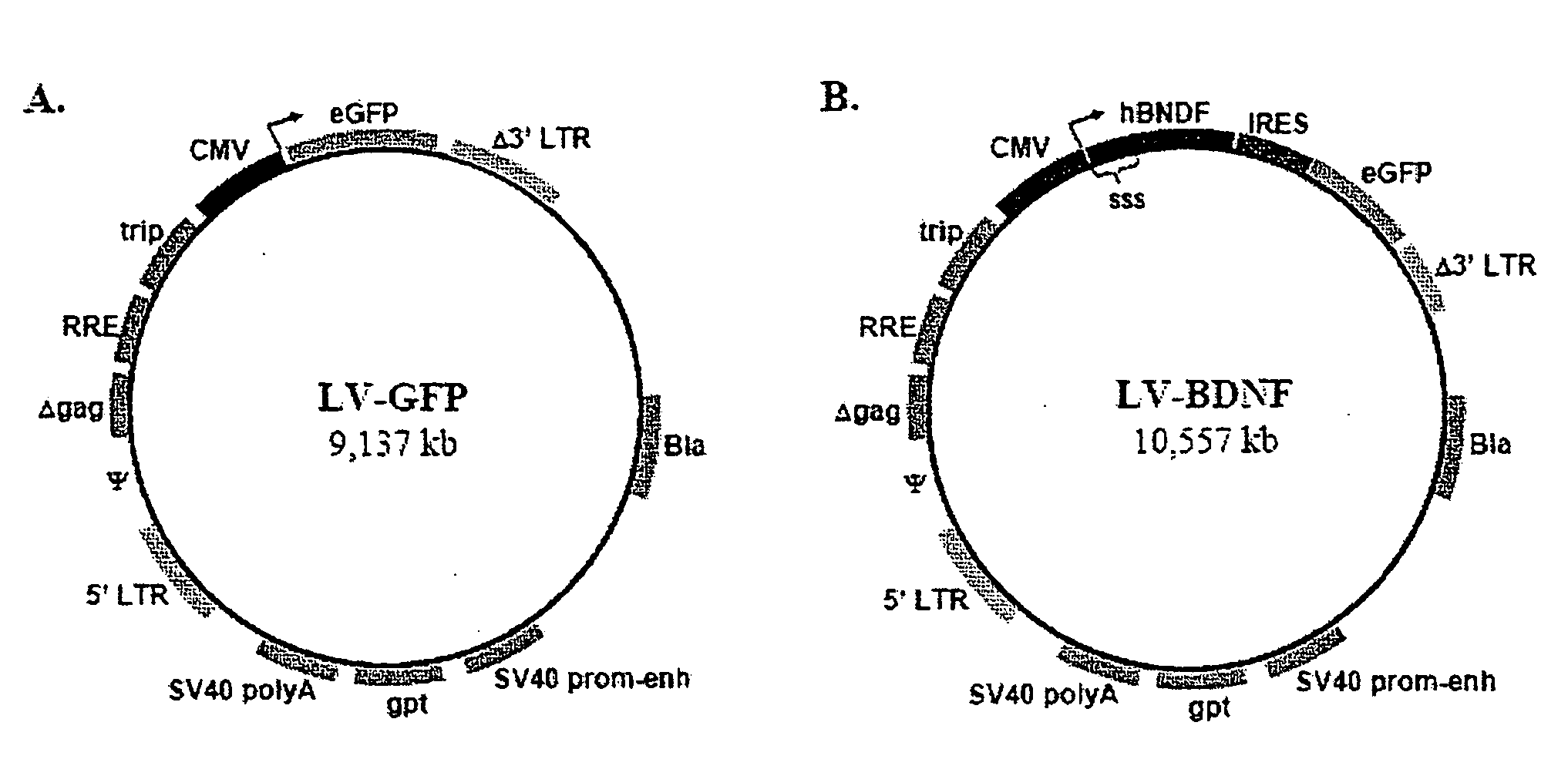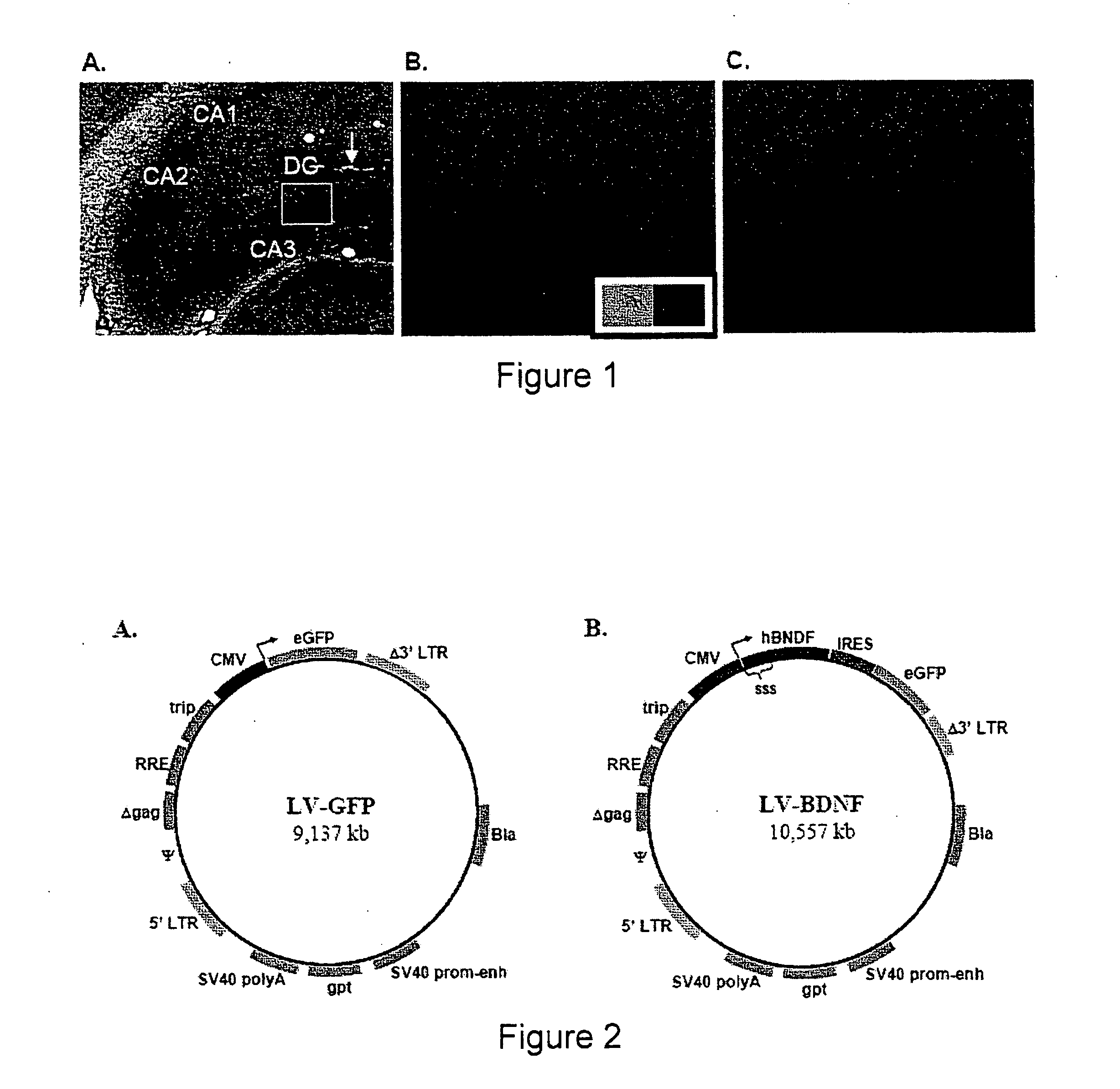Trojan horse immunotherapy
a technology of immunotherapy and trojan horses, applied in the field of trojan horses immunotherapy, can solve the problems of lack of effective treatment options, physical and mental impairment, and substantial loss of brain cells, and achieve the effects of reducing the number of patients
- Summary
- Abstract
- Description
- Claims
- Application Information
AI Technical Summary
Benefits of technology
Problems solved by technology
Method used
Image
Examples
example 1
DCs Generated In Vitro Migrate to Site of CNS Lesion
[0072] DCs for this experiment were derived from bone marrow precursor cells, as described previously (Grauer et al. (2002) Histochem. Cell Biol. 117(4): 351-62). Briefly, cell isolates from the femur of inbred, male Lewis rats were cultured in nutrient-rich media containing interleukin-4 (IL-4), granulocyte / macrophage-colony stimulating factor (GM-CSF), and Flt-3 ligand. Under these conditions, DCs form semi-adherent cell aggregates, which are further enriched by removal of non-adherent lymphocytes.
[0073] After seven days, resultant DC content was measured by flow cytometry. Cultured DCs were scored for expression of MHC class II (OX6), integrin-α-X (CD11c), and α-E2 integrin (OX62) using monoclonal antibodies, the expression of maturation-indicative co-stimulatory surface molecules CD80 and CD86. For each antibody, matched isotype controls were run in parallel to account for non-specific binding. In addition to analysis of cell...
example 2
Lentiviral Vectors and DC Infection / Transduction
[0075] Lentiviral vectors (LV) that express the reporter gene, eGFP (LV-GFP) are employed to determine optimal transduction conditions of DC cell cultures (FIG. 2A). LV-GFP vector is prepared as previously described (Kafri et al, (1999) J. Virol. 73(1): 576-84). Production of LV particles occurs in 293T kidney cells, allowing in trans expression of LV packaging proteins, the VSV-G envelope protein, and the actual transfer vector. By this approach, resultant LV particles only carry the transfer vector, which contains the chosen transgene and a minimal set of LV genes required for reverse transcription and nuclear integration (FIG. 2A). Omission of LV packaging proteins and the VSV-G envelope protein limits the activity of LV particles to one round of DC infection and transgene integration. In addition, the transfer vector is made ‘self-inactivating’ by a deletion in the U3 region of the 3′ long terminal repeat (LTR) to minimize the ris...
example 3
Assay for In Vitro Secretion of BDNF by Transduced DCs
[0079] BDNF normally exists as an extracellular protein, and its cDNA contains an endogenous signal secretory sequence. Consequently, LV-mediated integration of unmodified BDNF allows proper secretion from transduced DCs. LV vectors are designed to contain myc-tagged human BDNF followed by an IRES and eGFP (LV-BDNF, FIG. 2B).
[0080] DC cultures are transduced with LV-BDNF or LV-GFP according to the methods described above. Flow cytometry is used to assay the percentage of GFP-positive DCs, thus providing a measure of transduction efficiency. At 0, 12 and 24, and 48 hours post-transduction, the supernatant from DC cultures is collected and used for sandwich ELISA. Briefly, each sample of DC supernatant is added to wells coated with a monoclonal antibody for BDNF. After 1 hour of incubation, a second, biotinylated antibody for BDNF is added to each well and assayed for relative absorbance at the appropriate wavelength. Purified BD...
PUM
| Property | Measurement | Unit |
|---|---|---|
| physical | aaaaa | aaaaa |
| area | aaaaa | aaaaa |
| fluorescent emission | aaaaa | aaaaa |
Abstract
Description
Claims
Application Information
 Login to View More
Login to View More - R&D
- Intellectual Property
- Life Sciences
- Materials
- Tech Scout
- Unparalleled Data Quality
- Higher Quality Content
- 60% Fewer Hallucinations
Browse by: Latest US Patents, China's latest patents, Technical Efficacy Thesaurus, Application Domain, Technology Topic, Popular Technical Reports.
© 2025 PatSnap. All rights reserved.Legal|Privacy policy|Modern Slavery Act Transparency Statement|Sitemap|About US| Contact US: help@patsnap.com


